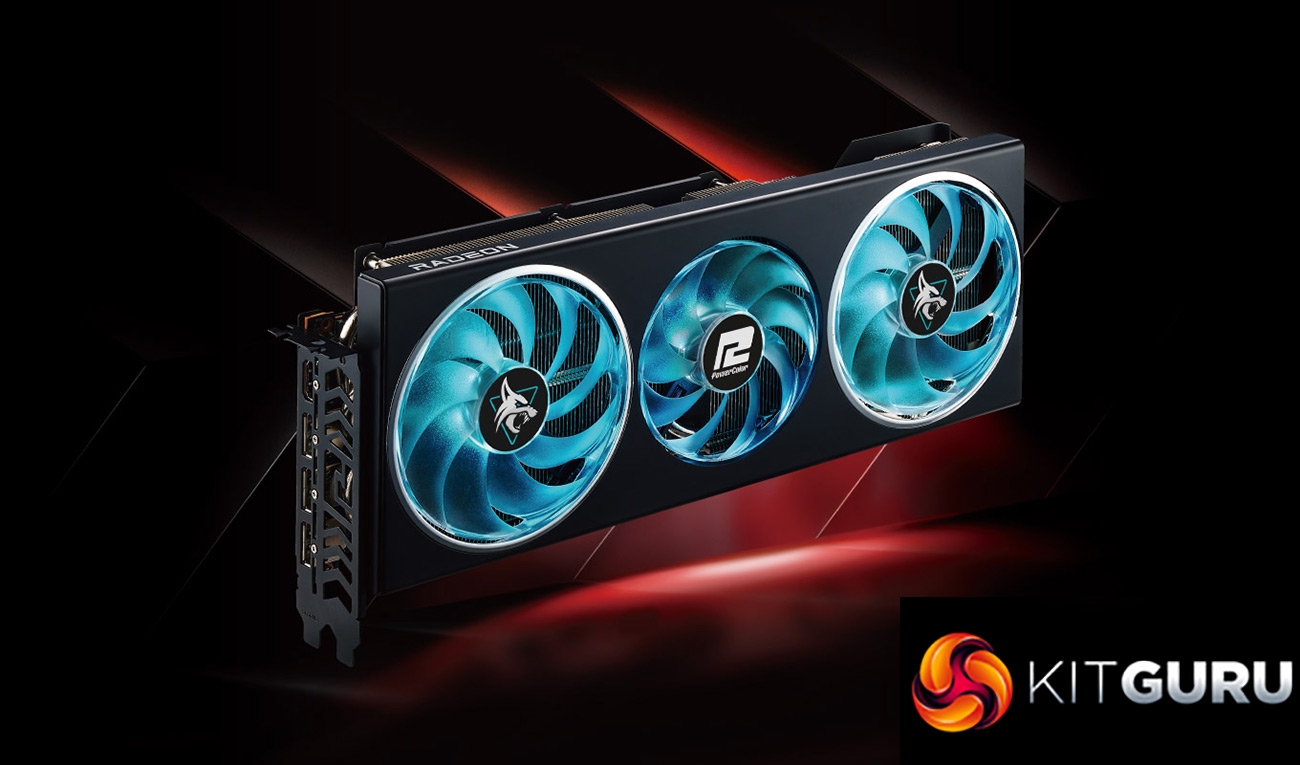PowerColor RX 7900 GRE Hellhound Review

Today we are taking a look at a highly-requested graphics card – the PowerColor RX 7900 GRE Hellhound. It's been some time since we last looked at one of these GPUs, and with the Hellhound available at £549, it will be interesting to see how it stacks up not only against other 7900 GRE models, but also against Nvidia's RTX 4070 Super. We assess thermals, noise levels, gaming performance, power draw and more to find out if this card is worth buying.
RX 7900 XTX
RX 7900 XT
RX 7900 GRE
RX 7800 XT
RX 7700 XT
Architecture
RDNA 3
RDNA 3
RDNA 3
RDNA 3
RDNA 3
Manufacturing Process
5nm GCD + 6nm MCD
5nm GCD + 6nm MCD
5nm GCD + 6nm MCD
5nm GCD + 6nm MCD
5nm GCD + 6nm MCD
Transistor Count
57.7 billion
57.7 billion
57.7 billion
28.1 billion
28.1 billion
Die Size
300 mm² GCD
220 mm² MCD
300 mm² GCD
220 mm² MCD
300 mm² GCD
220 mm² MCD
200 mm² GCD
150 mm² MCD
200 mm² GCD
150 mm² MCD
Compute Units
96
84
80
60
54
Ray Accelerators
96
84
80
60
54
Stream Processors
6144
5376
5120
3840
3456
Game GPU Clock
Up to 2300MHz
Up to 2000 MHz
1880 MHz
2124 MHz
2171 MHz
Boost GPU Clock
Up to 2500 MHz
Up to 2400 MHz
Up to 2245 MHz
Up to 2430 MHz
Up to 2544 MHz
ROPs
192
192
192
96
96
AMD Infinity Cache
96MB
80MB
64MB
64MB
48MB
Memory
24GB GDDR6
20GB GDDR6
16GB GDDR6
16GB GDDR6
12GB GDDR6
Memory Data Rate
20 Gbps
20 Gbps
18 Gbps
19.5 Gbps
18 Gbps
Memory Bandwidth
960 GB/s
800 GB/s
576 GB/s
624 GB/s
432 GB/s
Memory Interface
384-bit
320-bit
256-bit
256-bit
192-bit
Board Power
355W
315W
260 W
263W
245W
First, let's take a quick look at the specs. The RX 7900 GRE is using the same Navi 31 die that we first saw with the RX 7900 XTX and 7900 XT, but it has been significantly cut-down. Still, using the same die means we find a 300mm² Graphics Compute Die, based on TSMC's 5nm node, flanked by six 37mm² Memory Cache Dies (though two are disabled for the 7900 GRE). In total, the Navi 31 GPU packs 57.7 billion transistors.
While a full Navi 31 GPU packs in 96 Compute Units, the 7900 GRE is cut down to 80 CUs, 4 fewer than the 7900 XT, and each CU houses 64 Steam Processors, for a total of 5120 shaders. There's also 80 Ray Accelerators – one per CU – and 192 ROPs.
As for clock speed, AMD has de-coupled the clocks, so the front-end and shaders can operate at different clock speeds in a bid to save power. With the RX 7900 GRE, the Hellhound does come factory overclocked, with a boost at 2366MHz when using the OC BIOS.
The memory configuration is where we see the biggest change compared to the 7900 XT, however. With two of the six MCDs disabled, the RX 7900 GRE packs 16GB of GDDR6 memory clocked at 18Gbps, operating over a 256-bit memory interface, for total memory bandwidth of 576 GB/s. 64MB of Infinity Cache is also present, which allows AMD to claim an ‘effective memory bandwidth' of up to 2265.6 GB/s.
Power draw for the RX 7900 GRE is also rated at 260W Total Board Power (TBP), but the Hellhound has increased this up to 280W.The post PowerColor RX 7900 GRE Hellhound Review first appeared on KitGuru.
Welcome to Billionaire Club Co LLC, your gateway to a brand-new social media experience! Sign up today and dive into over 10,000 fresh daily articles and videos curated just for your enjoyment. Enjoy the ad free experience, unlimited content interactions, and get that coveted blue check verification—all for just $1 a month!
Account Frozen
Your account is frozen. You can still view content but cannot interact with it.
Please go to your settings to update your account status.
Open Profile Settings